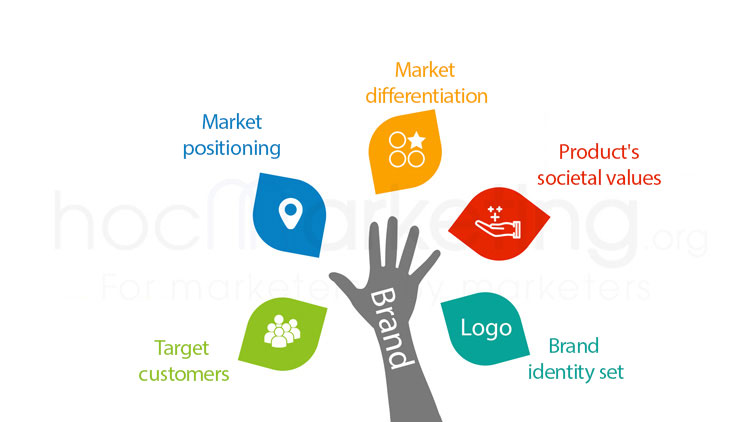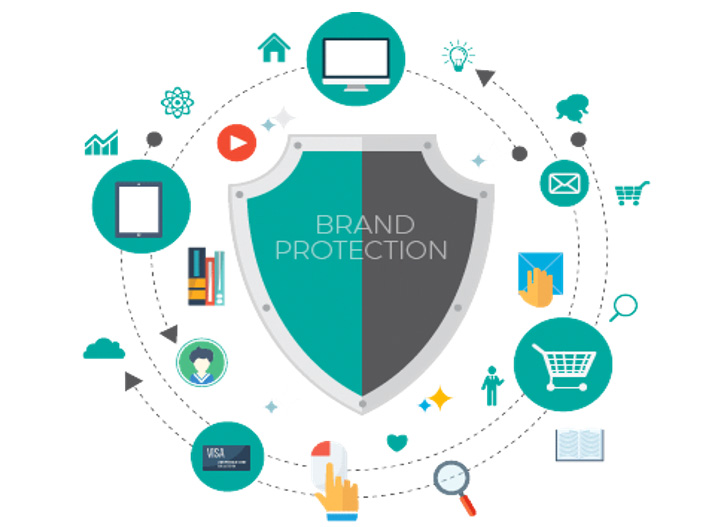
Steps to build brand equity in Marketing

The process of building a brand's asset value from an early stage to a strong development stage
Building brand equity is a long and never-ending process. This process needs to be carried out methodically and consistently in all aspects, from production and development to promotion and communication.
Building brand value is not an easy job, when businesses need to ensure that the value that customers receive when using products/services as well as experiences must be consistent with the content of the information. messages in advertising and communication.
The process of building brand equity
Stages of building brand equity
Identify elements associated with the brand
Building brand equity is essentially building and developing the elements associated with the brand. Branding elements are those that are closely related to your business's brand, as well as help it differentiate in the eyes of customers and consumers from other competitors' brands, including:
- Target customers (target market): A set of customers with specific characteristics that the brand wants to target
- Market positioning strategy: Where is the quality and price of the product/service relative to competitors?
- Market differentiation: What features make your products/services different from competitors.
- Product's societal values : In addition to the use value of products/services, what other values does your business bring to society (contributing to environmental protection, increasing commercial value, etc.) national & regional brands...)
- Brand identity set: Name, Logo, slogan, main color, trademark... in accordance with the above elements
Although it is only the stage that is done most of the plans, it is the most important step in the branding process. The people involved in this stage need to really understand the market that the business is targeting, as well as the resources (financial, human) that the business has, thereby helping marketers choose the right products. matching factor.
The criteria for selecting the appropriate elements associated with the brand include:
- Practicality: The outstanding features of the product/service must have practical meaning to customers and consumers. The value that businesses bring to society must be good and useful values.
- Doable: Your product/service positioning strategy must target customers that you can reach, as well as your ability to develop and produce products that can be easily achieved. products/services that meet the needs of these customers.
- Easy to remember: An easy-to-read, easy-to-remember name, logo, and slogan will make the promotion and communication process easier and more effective. Choosing a brand name that is too complicated will make it difficult for businesses to reach customers, as well as increase the possibility of being forgotten by customers and consumers.
- Ease of use: Logo design (color, shape) can meet the applicability in cases such as integrating into uniforms, name cards, brochures, websites...
- Scalability: How many product lines can this brand identity apply to?
2. Develop elements associated with the brand
After agreeing on the elements associated with the selected brand, the enterprise enters the stage of developing these elements. Depending on the situation and resources of each enterprise, it is possible to choose to develop synchronously all elements at the same time, or divide them into several stages:
- Products/services: Research and develop products/services that meet the criteria set out in the product/service positioning strategy, outstanding features that help differentiate your product from others. competitor. Get the product tested, calibrated, mass-produced, and brought to market.
- Communication: Finalize the design of the brand identity. Build advertising and PR campaigns with consistent messages with positioning strategies, clearly showing the difference.
- Internally: Building processes, allocating qualified personnel suitable for positions in order to clearly demonstrate the company's views on the value of the brand, promote and arouse employees' inspiration about the brand. brand value that the business is aiming for.
- External relations: Observe, learn, and receive suggestions from suppliers, customers, competitors, the community.
However, with the development of elements associated with the brand, businesses need to have plans to monitor progress and effectiveness in the development process in order to make appropriate adjustments.
3. Protect the brand and future-oriented the elements associated with the brand
After a business has succeeded in bringing a new brand to market, this brand is also the most vulnerable, by both internal and external influences. Therefore, businesses need to take protective measures such as:
- Check and register intellectual property rights for trademarks
- Strictly regulate intellectual property laws in labor contracts
- Strictly control production technology, avoid being disclosed
Over time, the elements associated with the brand may no longer be relevant, due to changes in factors in the microenvironment (customers, competitors, enterprise resources...) and the macro environment (economic, cultural, technological...). Therefore, businesses need to consider whether to change one of the elements associated with their brand in the future to ensure suitability with their business environment.

















